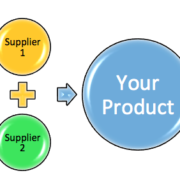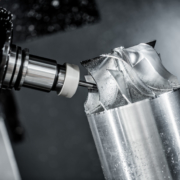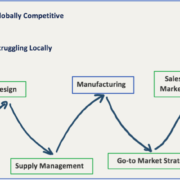We’ve all heard the saying, “Don’t keep all your eggs in one basket.” Common assumptions are that there is a lower cost with a single source manufacturer, due to you leveraging your volume but less risk with dual sourcing products due to having a qualified supplier up and running if the other fails to perform. Current reality is that all of our current customers either currently dual sourcing manufacturers, or they plan to do so in the near future.
To dual source means to use two preferred suppliers to provide the same product or service.
To single source means to use just one preferred supplier, despite there being multiple capable suppliers available.

Many companies choose to dual source a product to maintain quality levels of service to their customers and mitigate potential supply chain issues. It is a major strategy used to help mitigate organisational risk. See our previous blog on Manufacturing’s Role in Value Creation.
What are the benefits of dual sourcing?
1. Ability to Scale Your Business
When you project an increase in customer demand, the first question you should ask yourself is, “Can my current supplier handle the expected increase in volume?” For example, do they have the capacity to provide you with 100% of your demand, along with the appropriate service and fulfillment rates? This may be a case for dual sourcing; after all, you can’t sell a product when it isn’t available. Being out of stock means money lost for your business in the short-term and lost contracts in the long-term. Dual sourcing products can mitigate this lost revenue and potential loss of customer loyalty. Many times when a supplier cannot match your ramp up in product demand, you will continuously fall behind in fulfilling open orders, and potentially lose accounts altogether.
2. Covering Your Bases
Recently there have been numerous examples requiring companies to recall and replace products, forcing companies to pull products off the shelves. Companies who do not dual source run into inventory and shelf-presentation issues. For a company, not having product on the shelf is a major NO-NO, and results in customers no longer coming to you to fill their wants and needs. Having an alternate source in the case of recalls is critical. Many times your alternate manufacturing source can help you overcome issues in a timely manner. This may come at a price, but it is wiser to contract with two companies, than to lose the opportunity to provide product to your customers. You can even make safety-stock a point of discussion in contract negotiations and establish an agreement that if a disruption strikes they will help to the best of their ability.
3. Co-locating Supply and Demand
The most common form of dual sourcing we come across is outsourcing to China or other parts of the world. The logistical considerations of dual sourcing in this case are often not fully understood. When you dual source a product, many times the manufacturing plants are in different locations of the country or world. If customer demand or your production facilities are geographically dispersed, suppliers may be best suited to provide products and services to the nearest stores/distribution centers/facilities. In this case, you can save on freight charges and decrease lead times. Alternately, if supplier locations are close, you may be able to consolidate the product and ship in full truck loads rather than partial shipments. With dual sourcing manufacturers, many times you can find logistical cost savings as well as service lead times improvements. 80% of our “dual sourcing” manufacturing partnership customers are not located in Christchurch, enabling our customers to reduce organisational business continuity and manufacturing risks. Logistical challenged are virtually non-existing due to the ability to ship overnight, no customs or tax issues, etc.
4. The speed of trust
At Contour Engineering we believe in building enduring long term relationships with our customers. Our customers know that we have their back, and having access to trusted manufacturing suppliers often mean the difference between success and failure. Having access to more than one supplier enables you to re-act in emergency situations as well as when there is a spike in customer demand. You can dial your manufacturing needs up and down more easily than just dealing with a single source. The America’s Cup is starting in a few weeks and we understand the need to manufacture and ship urgent requirements as we support the team in Bermuda (see our post about Manufactring and Global Competitiveness).
In a competitive world where customer loyalty and market share truly matter, there are many reasons why you should consider dual sourcing your product manufacturing. The four examples above are sufficiently compelling to make it worth your time to at least consider the trade-offs in cost, service, and risk mitigation. You can’t sell a product when it’s not available, and you can’t run the risk of losing your customers to your competitors.
Feel free to contact us to discuss your manufacturing needs or to request more information.






